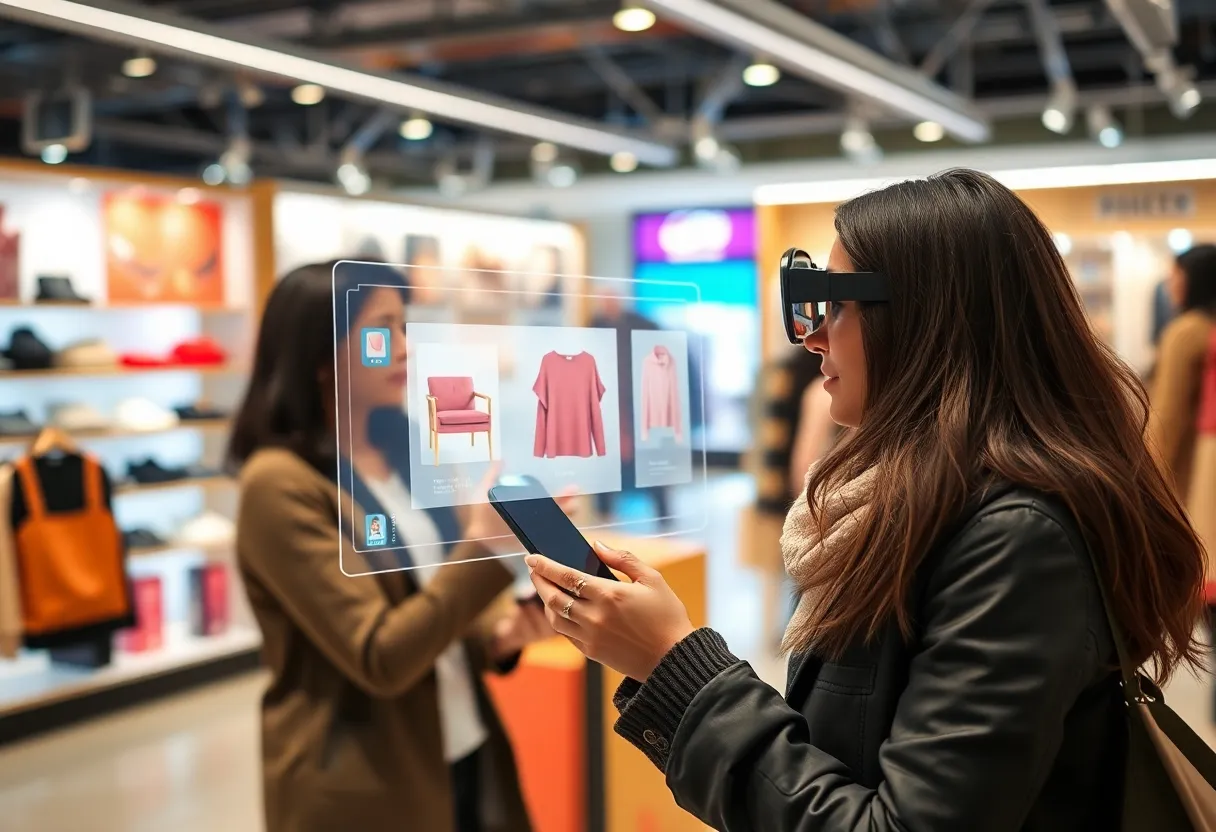How Can You Use Augmented Reality to Engage Your Customers in Digital Marketing?
In the continuously evolving landscape of digital marketing, businesses must find innovative methods to interact with their audience. One such method gaining traction is augmented reality (AR). By merging digital information with the real world, AR provides unique opportunities for brands to enhance customer engagement. This article elaborates on how organizations can leverage augmented reality for impactful digital marketing strategies.
Understanding Augmented Reality
Augmented reality overlays digital content onto the physical environment. This fusion creates an immersive experience, allowing users to interact with both real and virtual elements simultaneously. AR can be accessed via smartphones, tablets, or specialized AR glasses, making it highly accessible for consumers. As mobile technology advances, AR has become a powerful tool for brands aiming to capture attention and foster engagement.
Benefits of Using Augmented Reality in Digital Marketing
Employing AR in digital marketing strategies can offer several advantages:
1. Enhanced Customer Engagement
AR creates an interactive and dynamic method for customers to engage with products. Instead of passive viewing, customers can experience a product or service actively, which increases their emotional response. Engaging consumers in this way can lead to higher retention and conversion rates.
2. Improved Brand Perception
Innovative use of AR demonstrates a brand’s forward-thinking approach. When companies adopt modern technology, it can positively influence consumer perception, leading to a competitive advantage. Brands that utilize AR effectively are often viewed as leaders in their industries.
3. Increased Sales Opportunities
AR offers a unique way for consumers to visualize products before purchase. For instance, furniture retailers like IKEA have developed AR applications allowing customers to see how a piece of furniture would look in their homes. This capability can significantly reduce the likelihood of returns, directly impacting profits.
Implementing Augmented Reality Strategies
Integrating AR into a marketing campaign requires strategic planning. Here are essential steps to consider:
1. Identify Your Target Market
Understanding your audience is crucial. Identify segments based on demographics, interests, and behaviors. Tailoring the AR experience to meet the specific preferences of these groups can increase engagement levels.
2. Define Your Objectives
Establish clear goals for using AR in your marketing strategy. Whether aiming for increased brand awareness, higher sales, or improved customer loyalty, defining objectives will guide your AR development process.
3. Choose the Right Technology
The AR technology landscape is diverse. Brands can choose between mobile apps, web-based AR, or AR-compatible devices based on their requirements. Evaluating the pros and cons of each option can determine the most effective delivery method for your audience.
Successful Examples of Augmented Reality in Marketing
Examining successful case studies provides useful insights:
1. Sephora
Sephora’s Virtual Artist app allows users to try on makeup virtually. By utilizing AR, customers can experiment with different looks before making purchases. This engagement strategy has proven effective in enhancing the customer shopping experience.
2. Pokémon GO
While a gaming application, Pokémon GO showcases how AR can create massive consumer engagement. Brands collaborated with the game to create special in-game events, driving foot traffic to physical stores and fostering a unique brand presence in the AR landscape.
3. Adidas
Adidas developed an AR app that lets customers scan posters to access exclusive content, including product information and limited-time offers. This innovative approach not only engages customers but also encourages them to explore more about the brand.
Challenges and Considerations
Despite the benefits, adopting AR technology comes with challenges:
1. Cost of Development
Creating AR experiences can be expensive. Companies need to allocate resources for app development, maintenance, and updates. Budgeting appropriately is essential to ensure a positive return on investment.
2. User Experience
The success of an AR initiative heavily relies on user experience. If the AR experience is too complicated or does not meet consumer expectations, it can lead to frustration. Conducting thorough testing and adopting user-friendly designs is vital.
3. Technology Limitations
AR requires various technologies that may not be universally available or supported. Older devices or limited internet access could hinder the audience’s ability to engage with AR content. Being aware of these limitations is crucial for effective implementation.
Measuring the Impact of Augmented Reality Campaigns
Once implemented, measuring the effectiveness of AR initiatives is crucial:
1. Track Engagement Metrics
Monitor user interactions with the AR content. Metrics such as time spent on the platform, click-through rates, and social sharing can provide valuable insights into customer engagement levels.
2. Assess Conversion Rates
Evaluate how AR initiatives influence purchasing decisions. Comparing conversion rates before and after AR implementation can indicate its effectiveness in driving sales.
3. Solicit Customer Feedback
Obtaining feedback from users is essential. Surveys and reviews can provide information on user experience and areas needing improvement. This feedback loop allows brands to refine their AR offerings continuously.
The Future of Augmented Reality in Digital Marketing
The potential of AR in digital marketing continues to expand:
1. Evolving Technologies
Advancements in technology will further enhance AR experiences. Improved hardware and software will provide richer, more dynamic content, leading to increased customer engagement.
2. Integration with AI
Combining AR with artificial intelligence will create personalized experiences. Brands can tailor AR content based on individual user behavior, preferences, and purchase history.
3. Wider Adoption Across Industries
As more businesses recognize the benefits, AR will become a standard marketing tool. From retail to education, industries will implement AR to improve customer interactions and experiences.
Conclusion
Augmented reality represents an exciting frontier in digital marketing. By embracing this technology, brands can effectively enhance customer engagement, improve brand perception, and increase sales. While challenges exist, the benefits of AR far outweigh the obstacles. As technology advances, businesses must adapt and innovate, incorporating augmented reality into their marketing strategies to maintain competitiveness and drive success.
Author: STAFF HERE Chapin
CHAPIN STAFF WRITER The CHAPIN STAFF WRITER represents the experienced team at HEREchapin.com, your go-to source for actionable local news and information in Chapin, Lexington County, and beyond. Specializing in "news you can use," we cover essential topics like product reviews for personal and business needs, local business directories, politics, real estate trends, neighborhood insights, and state news affecting the area—with deep expertise drawn from years of dedicated reporting and strong community input, including local press releases and business updates. We deliver top reporting on high-value events such as the Chapin Christmas Parade, Fourth of July Celebration, and the Chapin Fall Festival. Our coverage extends to key organizations like the Chapin Chamber of Commerce and the Lexington School District One, plus leading businesses in retail and recreation that power the local economy such as Lake Murray Tourism and the Chapin Visitor Information. As part of the broader HERE network, including HEREaiken.com, HEREbeaufort.com, HEREchapin.com, HEREcharleston.com, HEREclinton.com, HEREcolumbia.com, HEREgeorgetown.com, HEREgreenwood.com, HEREgreenville.com, HEREhiltonhead.com, HEREirmo.com, HEREmyrtlebeach.com, HEREnewberry.com, HERErockhill.com, HEREspartanburg.com, HEREaustin.com, HEREcollegestation.com, HEREdallas.com, HEREhouston.com, and HEREsanantonio.com, we provide comprehensive, credible insights into South Carolina's dynamic landscape.







